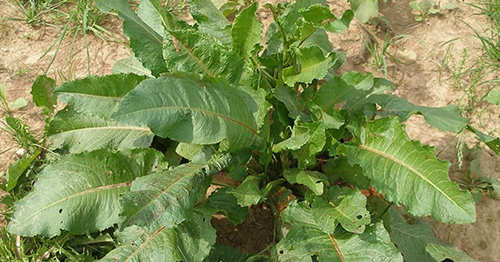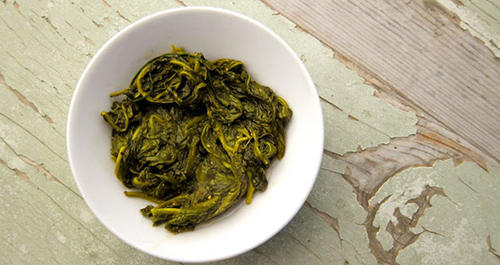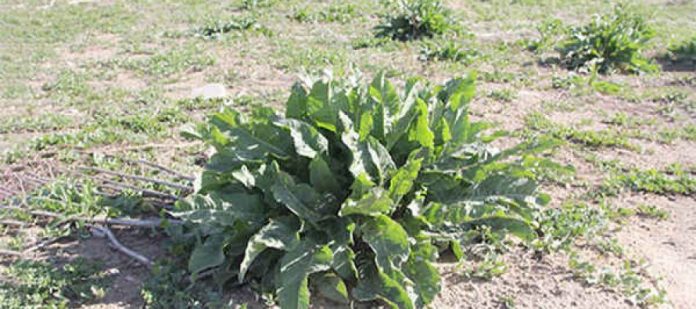We often get caught up in getting rid of the weeds on our yards so that it’s perfect. It is an ongoing struggle for a lot of people to make sure they remove any and all “weeds” from their land. Here is one “grass,” however, that you may want to think twice about pulling, cutting, or spraying with herbicides the next time you go to the yard to weave.
It’s often called dock weed, but it’s also known as yellow dock, curly dock, or curled dock. For this herb, the scientific name is Rumex crispus. It’s a perennial, meaning it grows back year after year, and it is widely found in North America in the United States and in Southern Canada.
What Does Dock Weed Look Like?
This weed grows to about 3 feet tall. It has a flower stalk with small yellow-green leaves and later, it is covered by brown seeds. One of this plant’s distinguishing features is the way the seeds will bind to animals, so that they can be taken away to germinate elsewhere. The leaves are smooth and oblong and grow in a spiral pattern from the base. This is a fairly hardy plant, even to the extent that in many areas this grows as an invasive species, and you can expect to see it growing in any number of environments.
The leaves can be harvested from mid spring to early summer, and the seeds can be collected during the months of summer and fall. Leaves should be harvested for consumption when they are tender and young, because they are too bitter for consumption when they are mature.

Uses for Dock Weed
This plant can be very useful given its declared status as a weed. Since it is found almost everywhere and can thrive in harsh conditions, it could be very useful to learn how to use this versatile plant in a situation of survival.
Here are some ways you can use this rough-and-tumble plant.
Related: 5 Home Remedies for Diarrhea
Dock Weed is Edible
The dock plant’s young leaves can be eaten up and have a tart, lemony taste. The raw leaves should be consumed sparingly, but small quantities can be consumed in a salad. The leaves can also be boiled in clean water several times to leach them from the high levels of oxalic acid they contain, and they can be consumed in greater quantities.
Once consumed, dock weed is a good source of many vitamins and minerals which we need to remain healthy including vitamin C and vitamin A, plus magnesium, manganese, and iron. This is also used to treat nutritional shortages such as scurvy, caused by lack of vitamin C, and anemia, which may be due to a lack of iron in the diet.

Dock is Often Used for Skin Issues
This plant is thought to be helpful in the treatment of various skin problems. One general usage in treating rashes for this plant is.
Its antibacterial properties make it useful when it comes to treating mild bacterial skin infections, including acne. It also has antifungal properties that make it suitable for the treatment of conditions caused by fungal infections, such as the athlete’s foot.
It’s most often used to treat chronic skin disorders such as eczema and psoriasis. Apart from directly treating these conditions, it is also used to help alleviate the symptoms that follow them, such as itching and skin burning. There are also occasions when people use this plant to reduce the look of age spots.
This can be made into a paste or poultice, taken internally or distilled into an infusion which can be used to treat skin conditions depending on the situation.
It May Help Respiratory Issues
In homeopathy, a ticking cough is treated with this herb. This is most sometimes used for treating airway congestion and nasal passages. It may help with conditions like bronchitis or the common cold due to these effects.
To use for cough, you can brew the plant’s root into a tea and drink three or four cups a day until symptoms go away.
It is Used as an Inflammation Fighter
Dock is also used for treating inflammation. A medication for arthritis and other disorders caused by chronic inflammation is mostly used because of its anti-inflammatory properties. These include fibromyalgia, gout, and rheumatism. It’s thought to help minimize inflammation by cleaning the blood and reducing toxicity.
This is thought to help keep the lymph nodes healthy, to promote their drainage and to reduce swelling. It may also have an effect on fever reduction.
The root is the part that you want to dock plant to fight inflammation. Dry the roots and place them in capsules or use a mixture of other inflammation-fighting components such as mint leaves and fennel to brew them into tea.
It Can Be Used as a Laxative
Dock marijuana has laxative effects which can be harnessed for constipation management. The problem with using this particular plant for this reason is that people experience varying degrees of efficacy, so this is not a treatment that you really want to count on.
You can literally eat the leaves and use curly dock as a laxative. Dry the leaves and roots and place them into capsules or you can boil them into a tincture and take a few drops of it a day.
Related: How To Prepare Medicinal Pickled Garlic
Dock Weed Warnings
Be careful to introduce this weed into new areas as it can transform into an invasive species, destroying the natural environment in an area.
When eating dock weed, be sure to indulge in moderation. Too much of this green can cause urinary tract problems and can possibly cause kidney stones. It can also have a laxative effect and cause certain people to suffer from stomach pain or cramps.
This plant has many applications that could come in handy in a SHTF situation so be sure to follow the usual wild edible protocols. Make sure you are completely confident that you have correctly described the plant, or else you will end up taking a poisonous plant that can do much more damage than dock weed will ever do good.











